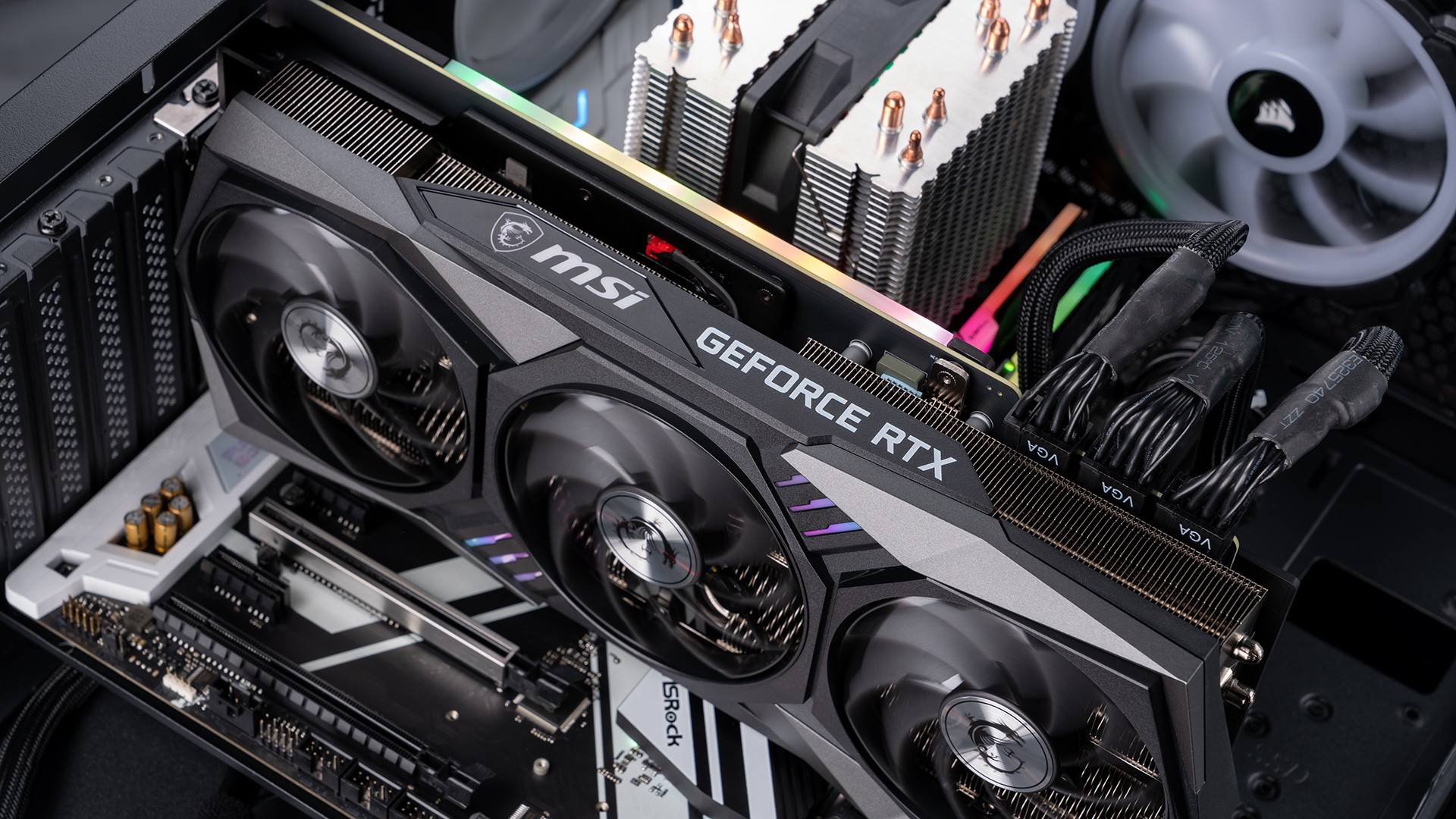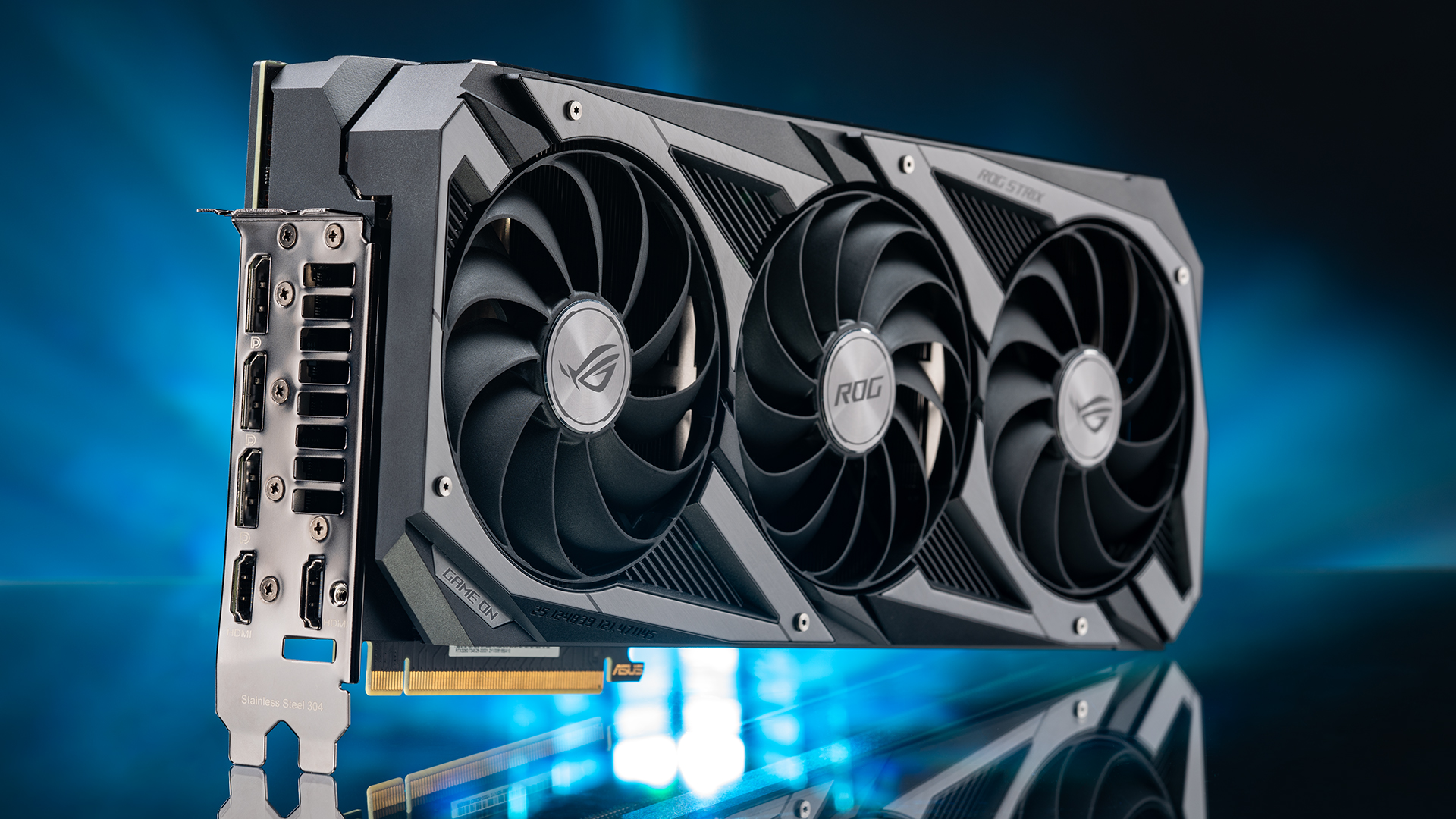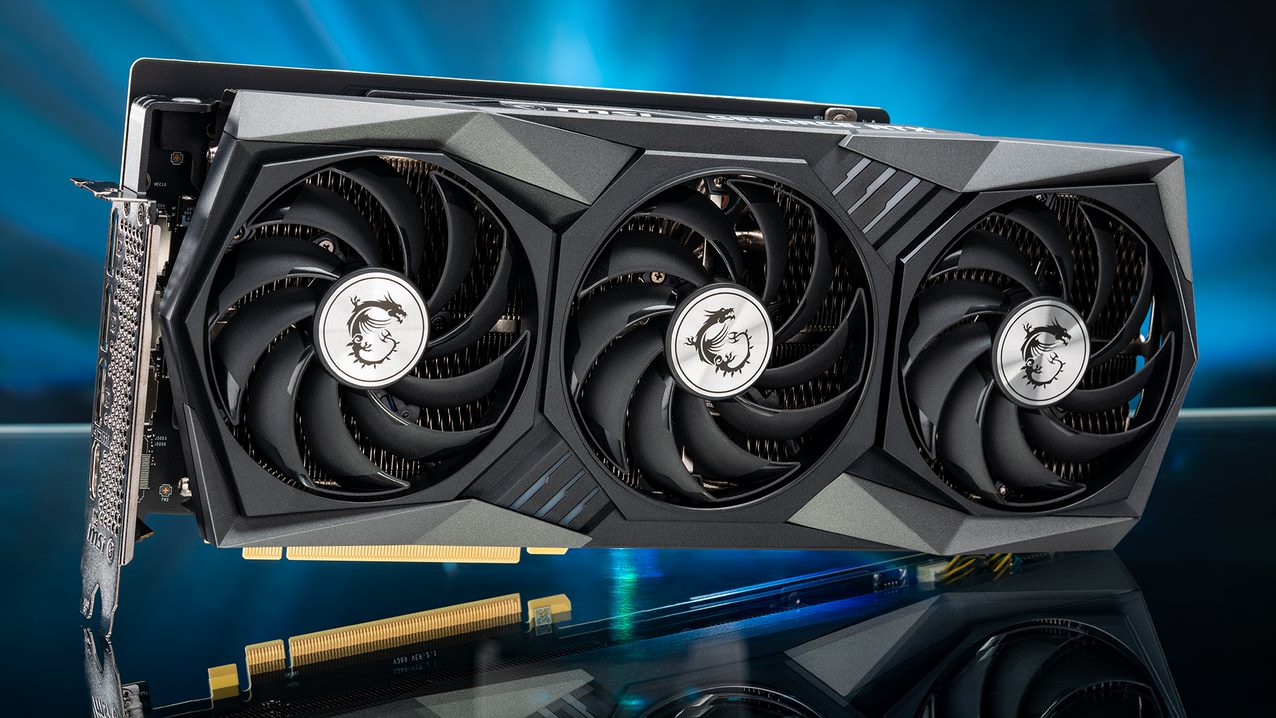
Next to the central processing unit (CPU), the graphics processing unit (GPU) has the most impact on a gaming PC’s performance. The GPU consists of an additional processor that takes data from the CPU, and translates it into images that can be rendered on your display. In other words, when you’re playing a game, the GPU is doing most of the heavy lifting.
The more powerful the GPU (sometimes referred to as a graphics card) the more information can be calculated and displayed in a shorter time, and the better your gameplay experience will be overall.
In the early days of PCs, the CPU was responsible for translating information into images. The data was maintained in special memory spaces called “frame buffers,” and was then transferred to the display. Many general-purpose CPUs didn’t excel at performing these kinds of processes, and so “graphics accelerators” were created to handle some of that specialized work that the CPU was undertaking. This became more important as graphical user interfaces (GUIs), found in more modern operating systems such as Windows, became more popular.
Today’s GPUs are very good at processing large amounts of image information and performing parallel tasks, making them incredibly fast at not only displaying text and graphics in windowed GUIs, but also at processing the complex 3D graphics required for modern gaming experiences. GPUs can also efficiently run other processes that involve manipulating lots of data in parallel, which makes them useful for some applications outside of gaming as well.
GPUs are important, but how do you know which one to choose? There is a wide selection of GPU options available from a variety of manufacturers, and it might not be immediately clear which best fits your needs. Knowing the basics of how they operate and the differences between them can help make that decision easier.
The guide below should help when choosing the right graphics card. After you know what you’re looking for, you can head over to Newegg’s GPU page to pick out the best one for your needs.
Prices and availability of products discussed were accurate at time of publication, but are subject to change.
Why does your graphics card matter?
For many people, gaming is the most hardware intensive task that you will ask your PC to perform. It’s no surprise, then, that serious gamers spend hours researching the latest GPU technology, and they often upgrade their GPUs on a regular basis. As GPUs get faster, games are designed to take advantage of the extra performance, and that pushes manufacturers to make even faster GPUs, continuing the cycle.
If you’re not prioritizing gaming, then you might not care as much about your GPU’s capabilities. That said, professional applications often make direct use of a GPU’s specialized processing capabilities, just in different ways. Examples include video editing, where a GPU can be used to speed up processes like video encoding, 3D rendering, and computer-aided design/manufacturing (CAD/CAM) applications like AutoCAD. All these programs benefit from the additional processing power of a GPU, though they benefit most from GPUs designed specifically with these applications in mind.
Choosing a GPU is, therefore, an important part of building, buying, or upgrading a PC. As with every PC component, the first question to ask yourself when choosing a graphics card is: how will you be using it?
Gaming
The gaming industry has been instrumental in the evolution of GPU technology. Today’s PC games are more realistic and complex than ever before, and the increasing performance of modern GPUs is both part of the reason why, and a response to gamers demanding better-looking and more complex games.
Simply put, if you’re building a PC to play games, then the GPU will be your most important purchase. Other components can also impact performance, such as the CPU, storage, and RAM, but the GPU has the most direct connection to what you see on screen when playing.
There are many kinds of games, though, and not all of them demand the most powerful GPU on the market. That’s why it’s important to read a game’s required, recommended, and optimal specifications to make sure that you get a suitable GPU.
Buying the best GPU you can afford is a good way to future-proof your build, and keep it ready to play popular games that have yet to be released. That said, if you know exactly the kind of games you want to play, doing a bit of research on the ideal GPU to run that title is a great way to start your shopping process.
Video and professional applications
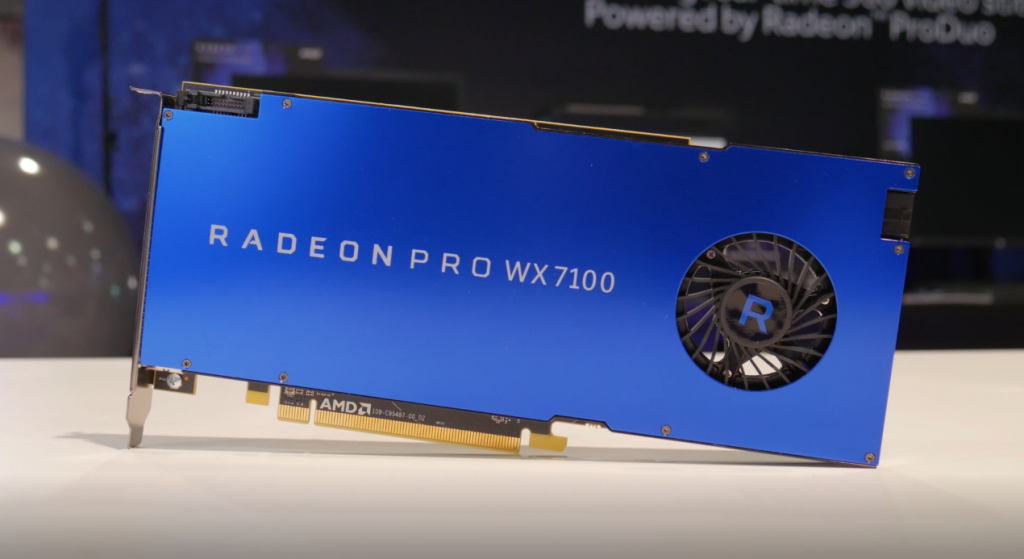
Those who use their PCs for complex tasks like 3D rendering, game development, and video editing also benefit from faster GPUs. High-end applications like AutoCAD and Adobe Premiere Pro can make use of GPUs to speed up processing, and make for faster and more efficient workflows.
That’s why there’s an entire segment of GPUs designed specifically for professionals. These workstation GPUs are optimized for these applications, and their drivers are certified to be stable and reliable when undertaking these operations. Professional class graphics cards can be immensely powerful and are often more expensive than even high-end gaming GPUs, but because they weren’t designed specifically for gaming workloads, they probably aren’t ideal for a gaming PC. Therefore, the most expensive GPU isn’t always “better,” and it’s important to pick a GPU based on how you plan to use it, not exclusively based on price.
We’re going to focus on mainstream, gaming-focused graphics cards in this guide. If you need a GPU to run professional applications, you’ll likely be looking outside of the normal consumer GPU market for the best options. Nvidia’s Quadro series, or AMD’s Radeon Pro line are great places to start.
Though professional-grade GPUs are designed for a different purpose, many of the fundamental concepts still apply.
Everyone else
If you aren’t gaming or running demanding professional applications that can use a GPU to speed things up, you might not need to invest as much money in your graphics card. If you’re mainly running productivity apps, browsing the web, managing email, and performing other low-resource tasks, then picking out the right RAM, CPU, and storage should be a higher priority.
The graphics capabilities embedded in your system’s CPU are probably sufficient, and you likely don’t require a separate GPU.
Integrated vs. discrete GPUs
Most modern CPUs have integrated graphics, which are essentially GPUs that are built into the CPU itself, or are otherwise closely interlinked with the CPU. These integrated graphics tend to be lower-performance options, providing enough power to drive the operating system and run web browsers, email clients, productivity apps, and other routine software, but not enough for anything more than casual (or older) games. This is quickly changing as CPUs become more powerful, but for now, if you want to play games, a separate (or discrete) GPU is likely the best solution.
Standalone GPUs range from relatively low-cost, entry-level options all the way up to incredibly powerful GPUs that can cost well over $1,000 all by themselves. You can buy discrete GPUs as part of pre-built systems, for a PC you’re building yourself, or to upgrade an older GPU.
Mobile vs. desktop
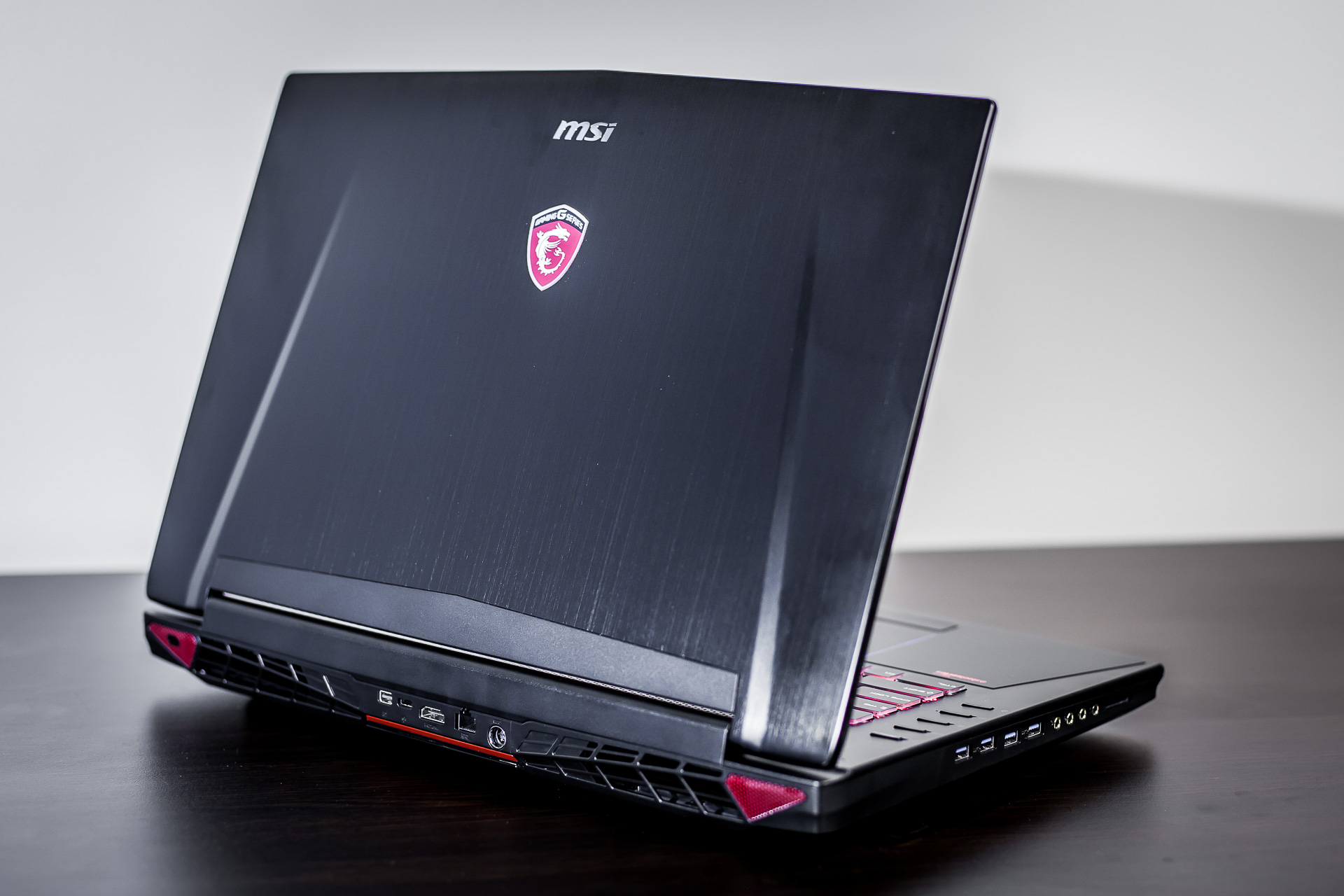
Choosing a GPU isn’t just important when you’re building or buying a new desktop PC. Many gaming focused laptop computers utilize discrete GPUs as well. If gaming on the go is a high priority, you’ll want to ensure your laptop has a GPU that’s capable of playing the games you want, and that you aren’t relying exclusively on the lower-power integrated graphics of your CPU.
Laptop GPUs used to be significantly less powerful than their full-sized desktop cousins due to space limitations and thermal considerations. Now they are now closer to parity than ever. Many modern gaming laptops use discrete GPUs that are very close in performance to their desktop equivalents, or are optimized to fit an impressive amount of power into very thin and light notebooks.
You no longer have to choose between portability and power.
Ray-tracing: the latest advancement in realistic graphics
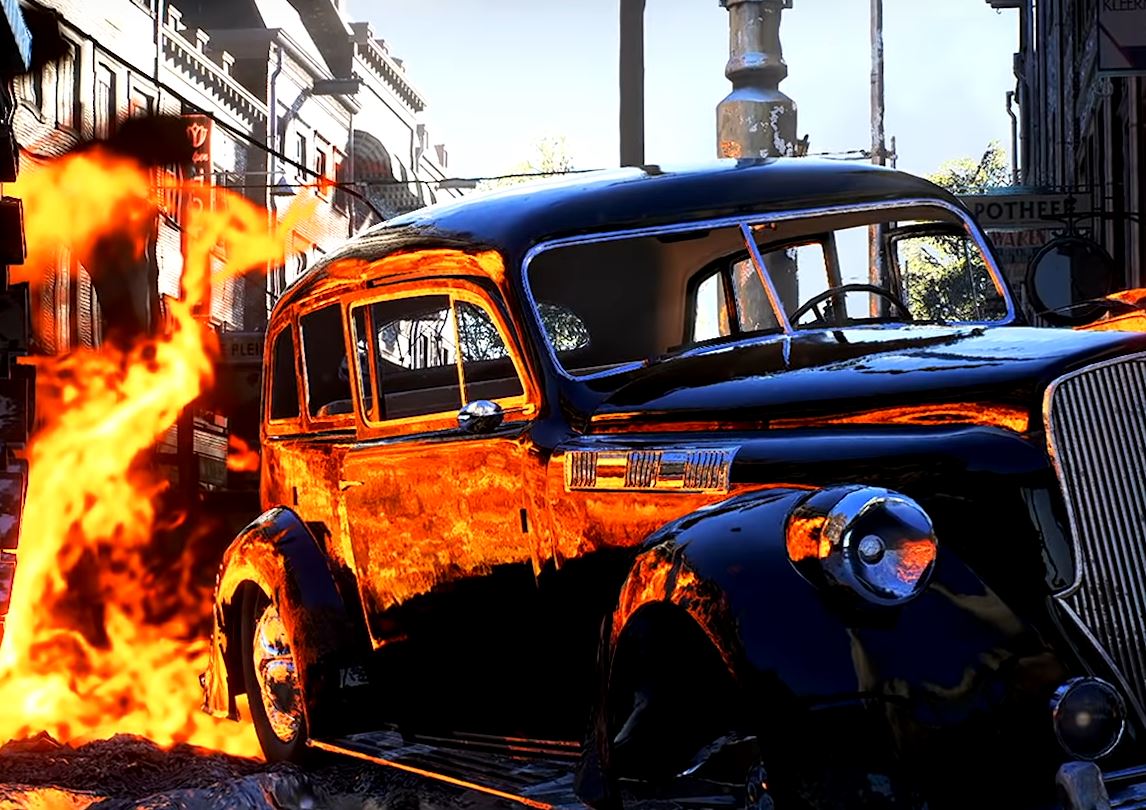
As with most PC hardware, GPU technology continues to evolve at a breakneck pace. A recent example of evolving graphics technology is “real-time ray tracing.” Ray tracing technology allows for more realistic lighting effects that more accurately simulate the way light and reflections behave in the real world.
“Ray tracing calculates the color of pixels by tracing the path that light would take if it were to travel from the eye of the viewer through the virtual 3D scene. As it traverses the scene, the light may reflect from one object to another (causing reflections), be blocked by objects (causing shadows), or pass through transparent or semi-transparent objects (causing refractions). All of these interactions are combined to produce the final color of a pixel that’s then displayed on the screen.”
Ray tracing, and other comparable graphics technologies, have been a goal of the computer industry for years now, and it’s only recently that the hardware and software have caught up with that vision. Finally, consumer-grade GPUs have the power to perform effective ray tracing in games. While games are still embracing this technology and it isn’t yet ubiquitous, there’s no doubt it will become the new normal as GPUs become more powerful.
Given it’s a newer technology, GPUs that can efficiently implement real-time ray tracing tend to be more expensive, but it’s likely that costs will continue to decline. Most modern flagship GPUs from AMD and Nvidia support some version of ray tracing, and it will continue to become more widely available with each new iteration of graphics cards.
Ray tracing, and other comparable graphics technologies have been a goal of the computer industry for years now, and it’s only recently that the hardware and software have caught up with that vision. Finally, consumer-grade GPUs have the power to perform effective ray tracing in games. While games are still embracing this technology and it isn’t yet ubiquitous, there’s no doubt it will become the new normal as GPUs become more powerful.
Given it’s a newer technology, GPUs that can efficiently implement real-time ray tracing tend to be more expensive, but it’s likely that costs will continue to decline. Most modern flagship GPUs from AMD and Nvidia support some version of ray tracing, and it will continue to become more widely available with each new iteration of graphics cards.
Upscaling technology: DLSS and FSR
Today’s GPUs include technology that can use upscaling to dramatically improve gaming performance. Simply put, the technology renders each frame at a lower resolution and then upscales it to the resolution set within the game. Methods are used to ensure that the image retains as much quality as possible during the upscaling process. Overall, the technology speeds up the rendering process while still providing a quality image.
Nvidia’s upscaling method is known as Deep Learning Super Sampling, or DLSS. It uses tensor cores that are fast at machine learning computation to examine previous upscaled frames and the current lower resolution frame. From that analysis, DLSS creates a frame that looks like it was rendered at a higher resolution and displays it on the screen. It performs that process for each frame, which thanks to the dedicated hardware is faster than rendering a high resolution image. Note that games must be written to support DLSS.
AMD uses FidelityFX Super Resolution (FSR), a simpler process that looks at the current frame and uses a few sharpening filter and edge detection algorithms to create a higher quality image from a lower resolution image. Unlike DLSS, FSR is an open-source technology that isn’t tied to dedicated hardware and can be used on any contemporary GPU. As with DLSS, games must be written to use FSR.
Nvidia vs. AMD
Now then, let’s talk about the two biggest players in the gaming GPU business (at least for now): Nvidia and AMD.
When you’re shopping for a GPU, you’re choosing between graphics cards that include all the components necessary to render an image to your display. These cards include cooling solutions, necessary connections, and most importantly, the graphics processor itself. This processor is an incredibly complex chip developed with decades of research and experimentation. Because the barrier for entry to create these processors is so high, it’s likely that any GPU you buy will have come from one of two companies: Nvidia or AMD.
Historically, these two companies have battled for leadership in the GPU market, constantly forcing each other to innovate to the benefit of consumers. Both have strengths, and both offer solid options. Whichever you choose, you’ll be able to find a card targeted to your gaming needs.
When shopping for a graphics card, you’ll most often be choosing from models made by companies other than Nvidia and AMD, such as ASUS, GIGABYTE, and MSI. These companies take the chips designed by either AMD or Nvidia and create their own graphics card using this technology.
Think of it as a car; the engine is created by AMD or Nvidia, but the rest of the car, including the body and the cooling, are designed by the company that manufacturers the card itself. In other words, if you buy an ASUS GPU, it’s still an Nvidia or AMD chip, in a body designed by ASUS. Each GPU manufacturer brings their own unique design choices and technologies to the table, which results in plenty of options to choose from.
The model of the GPU (for example, an Nvidia RTX 3080) refers to the actual processor itself, and this is what tells you where the GPU falls on the overall performance spectrum. There are other considerations too, such as cooling, clock speeds, and aesthetic design that can impact performance, but if you buy an RTX 3080, you know the fundamental capabilities of the card regardless of the manufacturer.
This is probably the most important factor to consider when making your choice.
Nvidia
Nvidia’s most recent series of gaming GPUs are built on its Ampere architecture. The most popular and powerful GPUs are those in its 30-series, with performance capabilities increasing with the number. Nvidia has a wide range of GPUs covering the low-end to the very high end of the consumer GPU market as well, not only flagship products.
There are many factors that dictate the performance of a GPU, but an easy place to start is with how many processing cores, called “CUDA cores” or “RTX cores,” an Nvidia GPU offers. This is usually a good indicator of its performance capabilities. However, as with most PC hardware, there are a multitude of indicators that factor into performance, and “better” can mean different things to different people.
Nvidia is in the process of developing its RTX 4000 series, codenamed Lovelace, and so far there are only rumors and leaks without any confirmation from the company. The primary speculations are that RTX 4000 GPUs will be faster than the current generation and that they will use more power.
Here are some of the most relevant Nvidia GeForce gaming GPUs as of mid 2022:
| GPU | CUDA Cores | RT Cores | Tensor Cores | Base GPU clock (MHz) | Boost GPU clock (MHz) | RAM type | RAM (GB) | RAM bandwidth (GB/s) | RAM width | TDP (watts) |
| RTX 3050 | 2560 / 2304 | 20 | 80 | 1510 | 1780 | GDRR6 | 8 | 224 | 128-bit | 130 |
| RTX 3060 | 3584 | 28 | 112 | 1320 | 1780 | GDRR6 | 12 | 360 | 192-bit | 170 |
| RTX 3060 Ti | 4864 | 38 | 152 | 1410 | 1670 | GDRR6 | 8 | 448 | 256-bit | 200 |
| RTX 3070 | 5888 | 46 | 184 | 1500 | 1725 | GDDR6 | 8 | 448 | 256-bit | 220 |
| RTX 3070 Ti | 6144 | 48 | 192 | 1580 | 1770 | GDRR6X | 8 | 608 | 256-bit | 290 |
| RTX 3080 | 8704 | 68 | 272 | 1440 | 1710 | GDDR6X | 12 | 912 | 384-bit | 350 |
| RTX 3080 Ti | 10240 | 80 | 320 | 1370 | 1670 | GDRR6X | 12 | 912 | 384-bit | 350 |
| RTX 3090 | 10496 | 82 | 328 | 1400 | 1700 | GDDR6X | 24 | 936 | 384-bit | 350 |
| RTX 3090 Ti | 10752 | 84 | 336 | 1670 | 1860 | GDRR6X | 24 | 1008 | 384-bit | 450 |
Older generation Nvidia gaming GPUs
| Desktop | ||||||||||
| GPU | CUDA Cores | RT Cores | Tensor Cores | Base GPU clock (MHz) | Boost GPU clock (MHz) | RAM type | RAM standard config (GB) | RAM bandwidth (GB/s) | RAM width | TDP (watts) |
| GeForce GTX 1080 | 2560 | N/A | N/A | 1607 | 1733 | GDDR5X | 8 | 352 | 256-bit | 180 |
| GeForce GTX 1080 Ti | 3584 | N/A | N/A | 1480 | 1582 | GDDR5X | 11 | 484 | 352-bit | 250 |
| GTX 1660 Ti | 1536 | N/A | N/A | 1500 | 1770 | GDDR6 | 6GB | 288 | 192-bit | 120 |
| RTX 2060 | 1920 | 30 | 240 | 1365 | 1680 | GDDR6 | 6GB | 336 | 192-bit | 160 |
| RTX 2060 SUPER | 2176 | 34 | 272 | 1470 | 1650 | GDDR6 | 8GB | 448 | 256-bit | 160 |
| RTX 2070 | 2304 | 36 | 288 | 1410 | 1620 | GDDR6 | 8GB | 448 | 256-bit | 175 |
| RTX 2070 SUPER | 2560 | 40 | 320 | 1605 | 1770 | GDDR6 | 8GB | 448 | 256-bit | 215 |
| RTX 2080 | 2944 | 46 | 368 | 1515 | 1710 | GDDR6 | 8GB | 448 | 256-bit | 215 |
| RTX 2080 SUPER | 3072 | 48 | 384 | 1650 | 1815 | GDDR6 | 8GB | 495.9 | 256-bit | 215 |
| RTX 2080 Ti | 4352 | 68 | 544 | 1350 | 1545 | GDDR6 | 11GB | 616 | 352-bit | 250 |
AMD
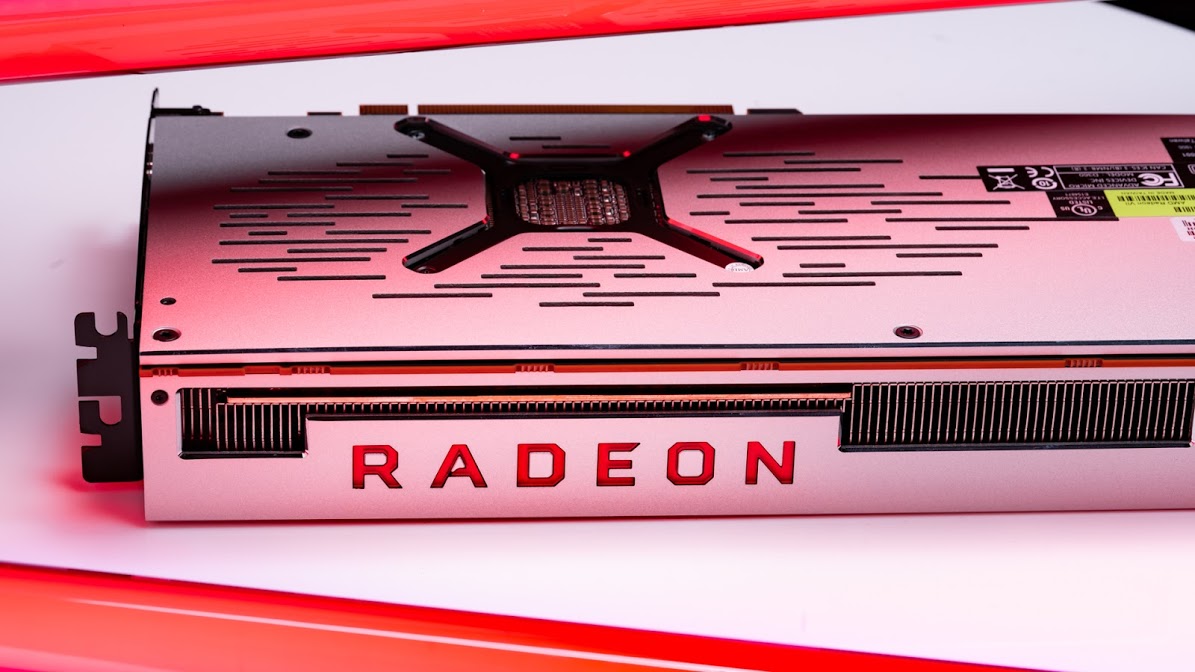
AMD also has a lineup of powerful gaming GPUs, including their flagship Radeon RX 6000 series, which utilizes the RDNA 2 architecture and is a successor to the AMD RX 5000 series. The RX 6000 series ranges from the entry-level RX 6400 up to the high-end RX 6950 XT.
Note that AMD’s term for its GPU cores is “Stream Processors,” and again the more, the better.
Here are AMD’s latest GPUs as of mid 2022:
| GPU | Compute Unites | Stream Processors | Boost Frequency (MHz) | RAM type | RAM standard config (GB) | RAM bandwidth (GB/s) | RAM width | TDP (watts) |
| Radeon RX 6400 | 12 | 768 | 2321 | GDDR6 | 4 | 128 | 64-bit | 53 |
| Radeon RX 6500 XT | 16 | 1024 | 2815 | GDDR6 | 4 | 144 | 64-bit | 80 |
| Radeon RX 6600 | 28 | 1792 | 2491 | GDDR6 | 8 | 224 | 128-bit | 132 |
| Radeon RX 6600 XT | 32 | 2048 | 2589 | GDDR6 | 8 | 256 | 128-bit | 160 |
| Radeon RX 6650 DT | 32 | 2048 | 2635 | GDDR6 | 8 | 280 | 128-bit | 180 |
| Radeon RX 6700 XT | 40 | 2560 | 2581 | GDDR6 | 12 | 384 | 192-bit | 230 |
| Radeon RX 6750 XT | 40 | 2560 | 2600 | GDDR6 | 12 | 432 | 192-bit | 250 |
| Radeon RX 6800 | 60 | 3840 | 2105 | GDDR6 | 16 | 512 | 256-bit | 250 |
| Radeon RX 6850 XT | 72 | 4608 | 2250 | GDDR6 | 16 | 512 | 256-bit | 300 |
| Radeon RX 6900 XT | 80 | 5120 | 2250 | GDDR6 | 16 | 512 | 256-bit | 300 |
| Radeon RX 6950 XT | 80 | 5120 | 2310 | GDDR6 | 16 | 576 | 512-bit | 335 |
Older generation AMD gaming GPUs
| Desktop | |||||||
| GPU | Stream Processors | Base GPU clock (MHz) | RAM type | RAM standard config (GB) | RAM bandwidth (GB/s) | RAM width | TDP (watts) |
| Radeon RX 590 | 2304 | 1469 | GDDR5 | 8GB | 256 | 256-bit | 185 |
| Radeon RX Vega 56 | 3584 | 1156 | HBM2 | 8 | 410 | 2048-bit | 210 |
| Radeon RX Vega 64 | 4096 | 1247 | HBM2 | 8 | 484 | 2048-bit | 295 |
| Radeon RX Vega 64 Liquid | 4096 | 1406 | HBM2 | 8 | 484 | 2048-bit | 345 |
| Radeon VII | 3840 | 1400 | HBM2 | 16 | 1024 | 4096-bit | 300 |
| Radeon RX 5700 | 2304 | 1465 | GDDR6 | 8 | 448 | 256-bit | 180 |
| Radeon RX 5700 XT | 2560 | 1605 | GDDR6 | 8 | 448 | 256-bit | 225 |
Specifications
As you can see from the charts above, there are a few specifications that you will want to keep in mind as you look to purchase a GPU. Note that the information in the charts represents the design specifications for each GPU, and graphics card manufacturers (such as ASUS, EVGA, and ZOTAC, among others) have tweaked the basic designs to come up with their own performance parameters.
That’s why it’s so important to do your research, including checking out benchmarks at sites like PassMark Software’s videocard benchmarks roundup. These benchmark comparisons will allow you to see how different versions of the same GPU compare to each other, and to other versions.
The following provides a brief discussion of some of the specifications that you’ll likely find during your research.
Thermal Design Power (TDP)
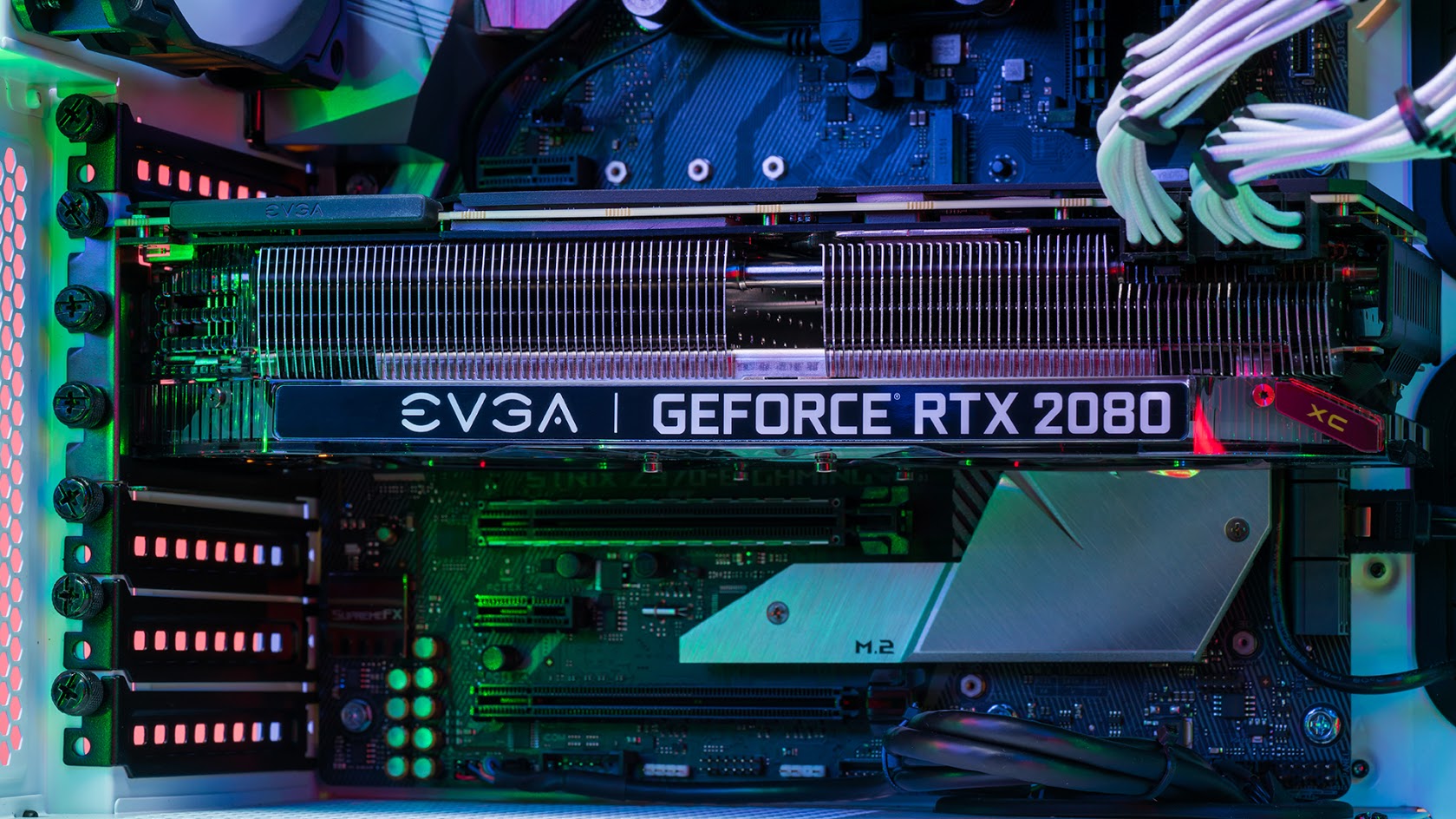
The discrete GPU is often the most power-hungry component in a modern PC. If you’re building or upgrading a PC, then you’ll want to ensure the power supply is sufficient to support the GPU that you want to install.
As with all powerful hardware that uses electricity, GPUs generate a lot of heat, and require sufficient cooling to run reliably and at peak performance. Most graphics cards will include a power supply recommendation, usually with recommended watts (such as 750 watts.) You’ll need to consider how much power is drawn by the other components in your PC as well, and ensure that your power supply is sufficient to support everything in your system.
The combination of how much power a GPU pulls and how much heat it generates is known as “thermal design power or TDP. This measurement is indicated in watts, and that’s the number that you will see in a graphics card’s specifications. The higher the TDP, the more power that’s required to operate the GPU, and the more heat the GPU produces. This can be important in both desktops and laptops, where thermals become a high priority given space constraints.
Note that as you are designing your PC or choosing a GPU upgrade, you will also want to research how hot a given graphics card runs at maximum power. This will help you choose the right cooling system for both your GPU, and the PC itself.
It’s also important to know what kind of power connections a graphics card requires. Usually this is a mix of six-pin and eight-pin connectors, but this can vary. Newer GPUs may have slightly different power configurations, so when upgrading or adding a GPU, you’ll want to ensure not only that your power supply provides sufficient wattage, but also that it has the proper connections to support the power needs of the GPU.
Memory
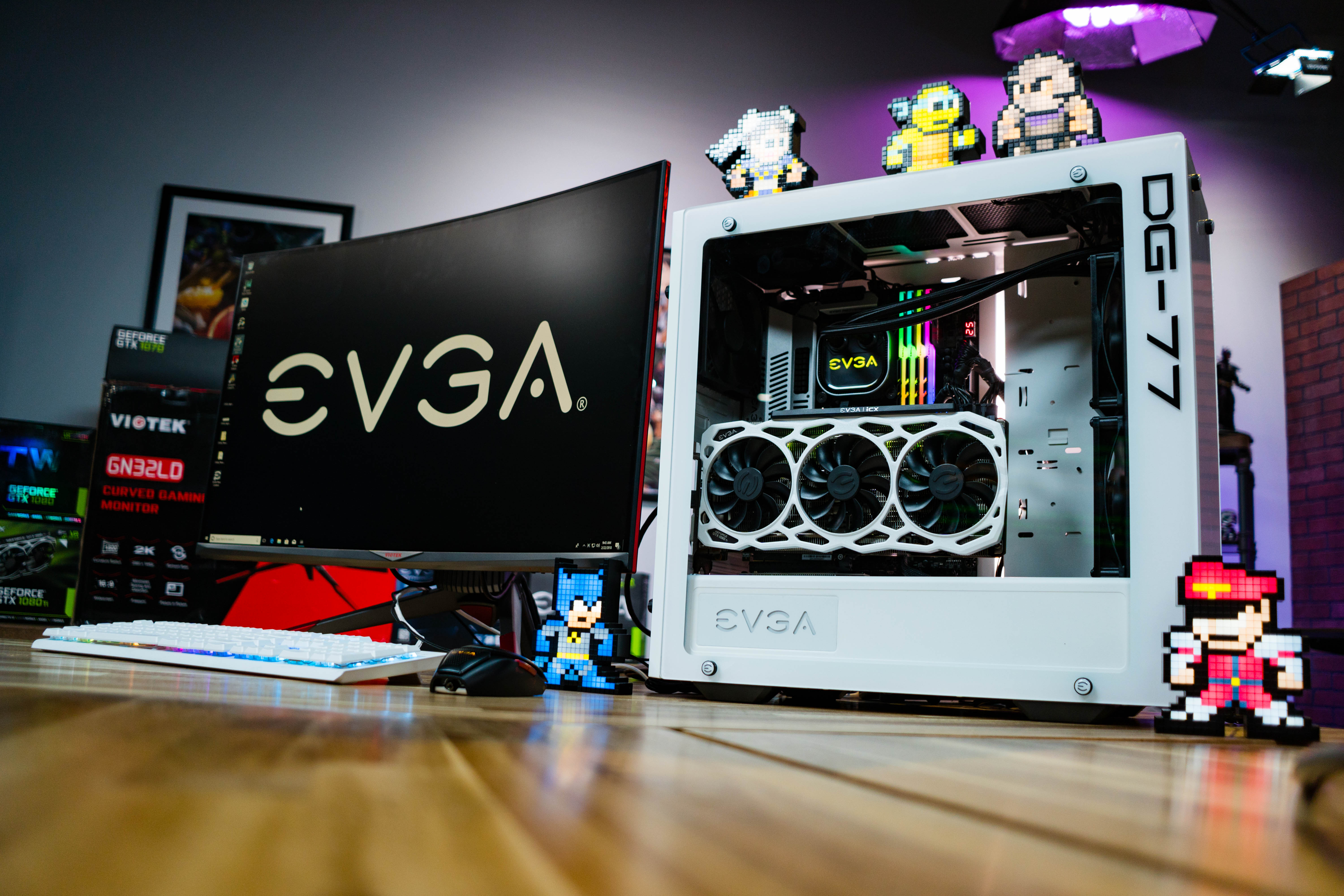
Discrete GPUs utilize a special type of memory to store the data needed to ultimately display information on a screen. When considering discrete GPUs, you’ll want to consider both how much memory a graphics card has, and how much bandwidth it provides.
The amount of video random access memory (VRAM) in your GPU is important for high-performance games that use large amounts of data to construct the complex images on screen. This is also a factor when running multiple displays, especially if they are higher resolution or refresh rate.
Generally speaking, you’ll get more graphics RAM as you buy faster graphics cards, and so as long as you buy a GPU that’s fast enough for your desired games, then you should have sufficient VRAM.
RAM bandwidth is another important metric to consider as well. The faster the RAM, the faster the GPU can access information and display it on screen. The GPU model generally determines the kind of RAM present in a graphics card, so once again, as you choose the right GPU for your needs, you’ll likely get the right RAM to go with it.
Interface
Today, almost all discrete GPUs plug into PCIe slots, and most make use of 16x PCIe. GPUs vary, in how many physical slots they fill, between single, double, and even triple slot configurations. You’ll need to be sure that your PC’s motherboard has enough room for your chosen GPU. This means you also need to consider any other components that you want to plug in alongside the GPU, especially if they are going to use a PCIe slot.
You also need to ensure your case is large enough to support the components you are installing. While most modern PC cases will support standard gaming GPUs, if you are interested in a Small Form Factor PC, or a particularly large GPU, research the compatibility between your motherboard, case, and graphics card. Insufficient space can result in improper cooling, which can lead to decreased performance.
If space constraints are a concern, there are GPUs designed specifically to have a smaller profile.
Connections
Of course, a GPU by itself isn’t very useful. It needs to connect to a motherboard, and a display, or multiple displays, to function. There are a few different connections used by modern displays, including DVI, HDMI, and DisplayPort. VGA is an older, legacy connection that might still be available on some displays, but is quickly fading into obscurity.
Most modern GPUs support only HDMI and DisplayPort formats, which are pretty much the standard for gaming focused systems and displays. A popular configuration on modern gaming GPUs is three DisplayPort outputs, and one HDMI.
The differences between all the different display connections is a topic deserving of its own article. Suffice it to say you will need to make sure that your chosen graphics card supports enough connections for all the monitors you want to plug into your PC, and that they are the right connections. Note that in many cases you can buy adapters to convert a connection on the graphics card to one that a display can accept, though this can limit access to features like higher resolutions and refresh rates.
You will need to double-check the specifications to make sure a given graphics card can support as many monitors as you want to connect, and that the connections are compatible between your GPU and your displays.
More than one GPU
Some graphics cards can be connected to run in parallel with additional cards, which can provide serious boosts in performance for demanding games. This is called Scalable Link Interface (SLI) for Nvidia, and Crossfire for AMD. If you want to run multiple graphics cards in your PC, then you’ll need to select both the right cards and the right motherboard that supports this technology.
This configuration is not as common as it used to be. Nvidia’s popular 3070 and 3080-series cards do not provide the option for SLI at all, as fewer games support multiple GPUs. If you want wide support for SLI or Crossfire, you’ll want to go with older GPUs. If you do that, you’ll miss out on newer technologies like ray tracing, so consider carefully.
GPUs and cryptomining
It just so happens that GPUs are very fast at performing the kind of computations used in cryptocurrency mining. Because of that, there’s been a long-standing shortage of GPUs as cryptocurrency miners have bought up all available stock to use in massive mining rigs. That made it difficult to buy a GPU and greatly inflated the price. As this story is being updated, cryptocurrency prices have been falling and the GPU shortage has alleviated somewhat.
Buy the GPU that’s right for you
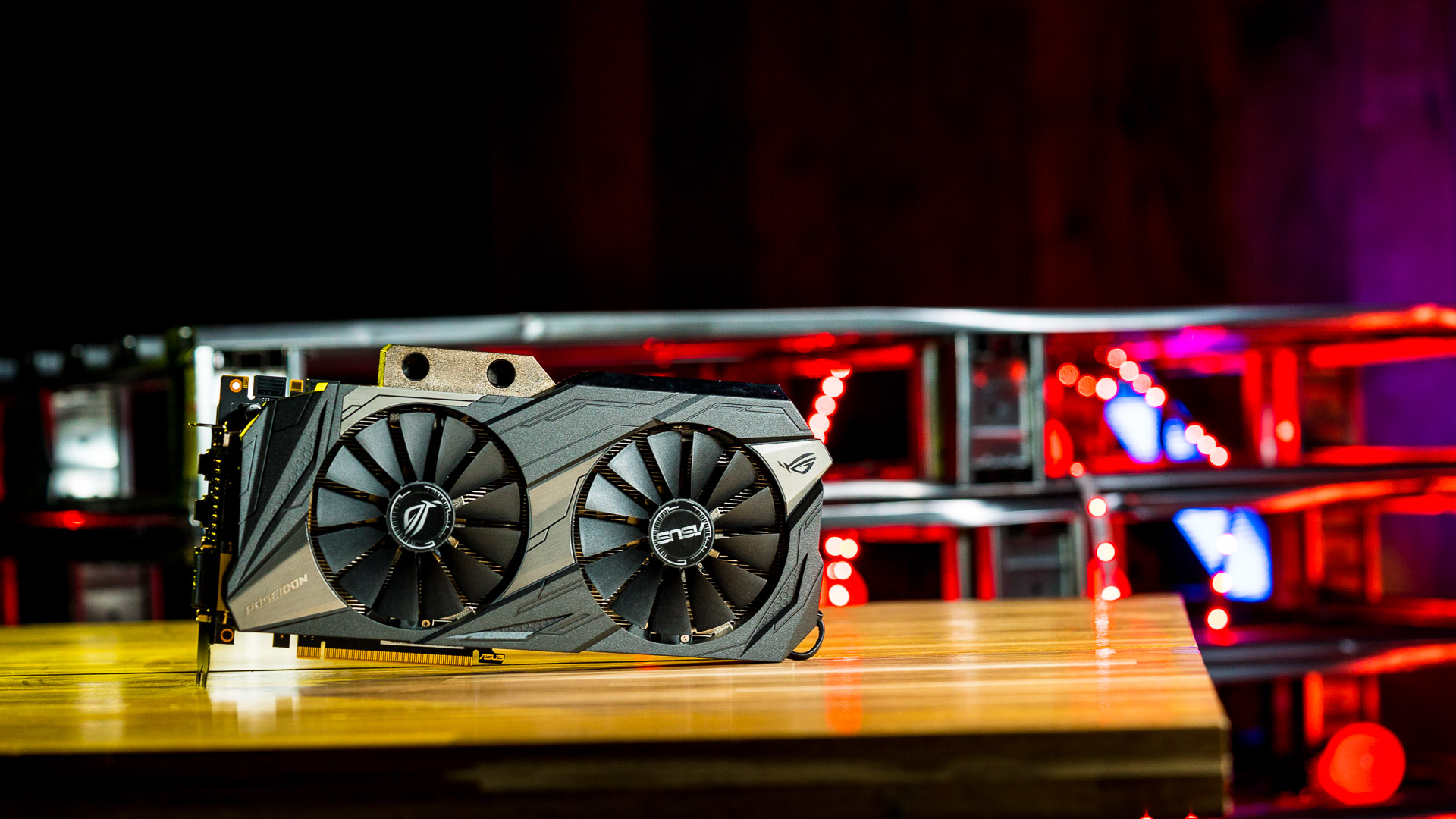
Hopefully you have a better sense of what to look for in a GPU. Now that you know the basics, it’s a good idea to visit Newegg’s GPU section for even more information. You can use Newegg’s comparison tool for a side-by-side list of how different graphics cards compare, which can help you determine the right card for your system.
Another resource to help you choose a GPU and graphics card are the games and applications you want to run. Most will list required, recommended, and optimal specifications, which will often include recommended CPU, the GPU, RAM, and storage.
Survey the games and applications that matter most to you, and make sure that you select a graphics card that will meet at least the recommended specifications.
Enjoy your new GPU!


